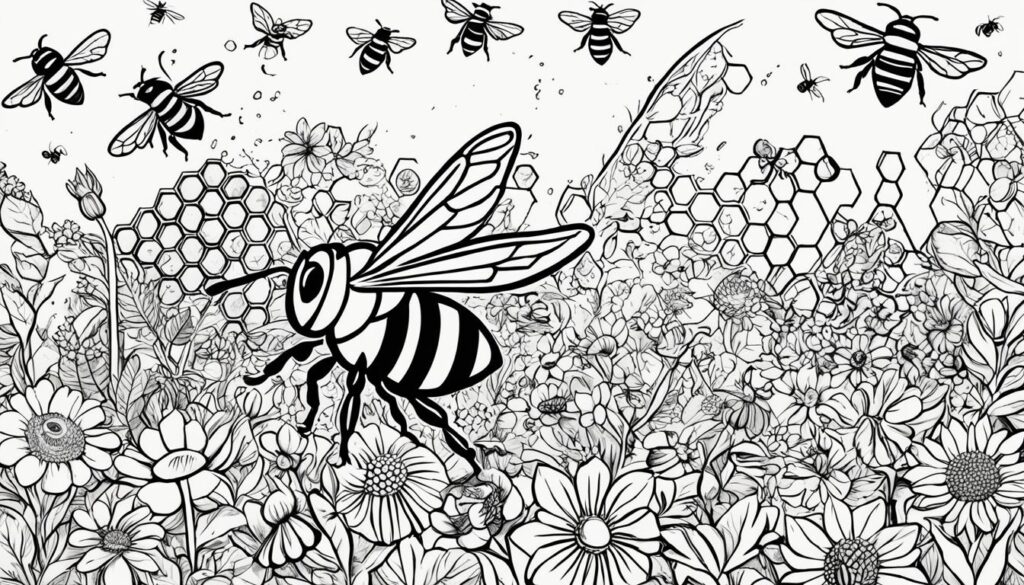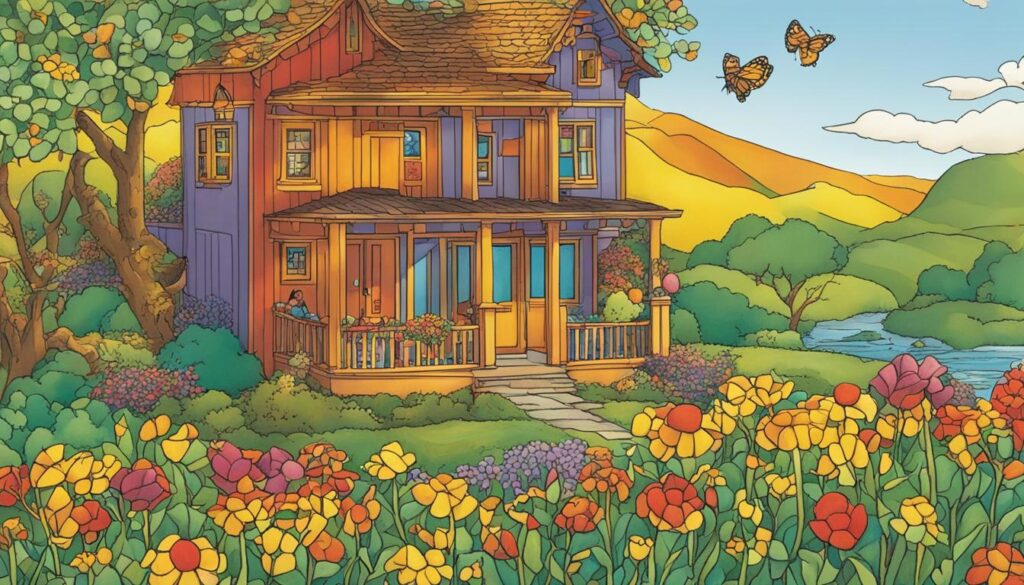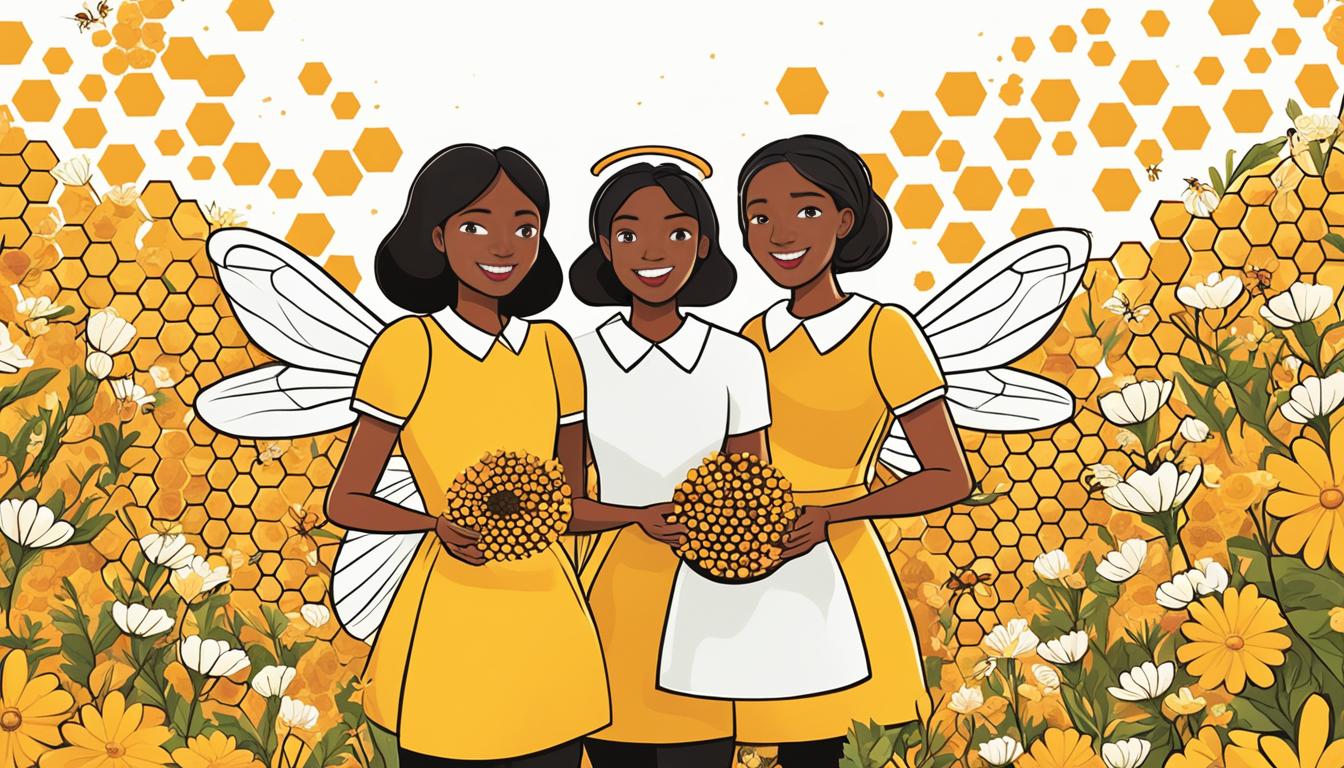In this article, we will explore Sue Monk Kidd’s novel, ‘The Secret Life of Bees.’ Set against the backdrop of South Carolina in the 1960s, the story follows Lily Owens on her poignant coming-of-age journey, delving into themes of love, forgiveness, and female empowerment. We’ll provide a comprehensive book summary of ‘The Secret Life of Bees,’ analyzing the novel’s characters, plot, themes, and symbols, as well as its critical reception and impact. So why wait? Let’s dive in and explore this beloved contemporary classic!
Key Takeaways
- ‘The Secret Life of Bees’ is a novel by Sue Monk Kidd that explores themes of love, forgiveness, and female empowerment.
- The story takes place in South Carolina during the 1960s and follows Lily Owens on her poignant coming-of-age journey.
- The novel’s characters, plot, themes, and symbols have resonated with readers and earned critical acclaim.
- ‘The Secret Life of Bees’ has been adapted into a film and continues to captivate audiences today.
Introduction
The Secret Life of Bees by Sue Monk Kidd is a poignant coming-of-age story that has captured the hearts of readers worldwide. Sue Monk Kidd, an American novelist, explores the themes of love and forgiveness, touching on social issues such as racism and female empowerment. Since its publication in 2001, the novel has gained high critical acclaim and remains a favorite among book clubs and readers alike, cementing its place in contemporary literature.
At the core of the novel is the story of Lily Owens, a fourteen-year-old girl struggling with the death of her mother and the secrets that surround her family. Set in South Carolina during the 1960s, Lily finds solace in beekeeping and the captivating world of the Boatwright sisters, a trio of strong and influential Black women. Through her journey with the Boatwrights, Lily finds love, acceptance, and, ultimately, the truth about her past.
The next section will provide a detailed overview of the novel’s setting and how it influences the story’s events.
Setting
The Secret Life of Bees is set in South Carolina during the tumultuous decade of the 1960s, a time of significant social and political change. Against the backdrop of the civil rights movement and the fight for racial equality, the main character, Lily Owens, embarks on a journey of self-discovery as she grapples with the complexities of the world around her. The lush, humid landscape of South Carolina serves as a hauntingly beautiful backdrop for the story, and Kidd’s vivid descriptions of the lush flora and fauna create a vivid picture of the natural world.
The influence of the setting on the story is palpable, with the oppressive heat and simmering tensions between the characters reflecting the uneasy atmosphere of the era. The novel’s location in the deep south also plays a significant role in exploring the themes of racism and segregation that are central to the narrative.
Plot Overview
The Secret Life of Bees is a poignant coming-of-age story of 14-year-old Lily Owens, who runs away with her African-American caretaker, Rosaleen, in search of answers about her mother’s tragic death. The novel is set in 1960s South Carolina, where Lily is taken in by the Boatwright sisters, August, May, and June, who are beekeepers. Lily’s experiences with the Boatwrights and her growing understanding of the circumstances surrounding her mother’s death ultimately lead to her personal growth.
The narrative is divided into four parts and is filled with engaging and emotionally powerful events. In part one, Lily and Rosaleen flee to Tiburon, where they are given a new home by the Boatwright sisters. In part two, Lily learns beekeeping from August and forms genuine connections with the Boatwright sisters. In part three, Lily discovers the truth about her mother’s death and learns to embrace forgiveness. In the final part, Lily returns home, accepts her mother’s death, and emerges as a mature young woman.
Main Events
| Part | Main Events |
|---|---|
| One | Lily and Rosaleen flee to Tiburon, find shelter with the Boatwright sisters, and begin a new life. |
| Two | Lily learns beekeeping with August and becomes immersed in the Boatwrights’ way of life. She also develops her relationships with Zach and Rosaleen. |
| Three | Lily learns the truth about her mother’s death, experiences a deep loss with the death of May, and begins to embrace forgiveness. |
| Four | Lily returns home, accepts her mother’s death, and realizes she has grown into a strong and compassionate young woman. |
The plot’s development is bolstered by complex characters and dialogue that expands the narrative’s themes.
Characters
In ‘The Secret Life of Bees,’ Sue Monk Kidd creates a rich cast of characters, each with their own unique backgrounds, motivations, and relationships with one another. The main protagonist, Lily Owens, is a young white girl who grows up in the racially charged South Carolina of the 1960s. Lily is haunted by the memory of her mother’s death and seeks solace in the lives of three black beekeeping sisters, August, June, and May Boatwright.
| Character Name | Description |
|---|---|
| Lily Owens | A young white girl who is haunted by the memory of her mother’s death and seeks comfort in the lives of three black beekeeping sisters. |
| August Boatwright | The matriarch of the Boatwright family and a devoted beekeeper, August becomes a mother figure to Lily and helps her discover her own sense of identity. |
| June Boatwright | August’s strong-willed sister who initially resents Lily’s presence but eventually learns to accept her and support her growth. |
| May Boatwright | The sensitive and fragile sister who struggles with the weight of the world’s sorrows but finds joy in small moments of beauty. |
| Rosaleen Daise | Lily’s black nanny and closest confidant, Rosaleen becomes a catalyst for Lily’s journey towards self-discovery. |
The interactions and relationships between these characters drive the narrative and explore themes of race, identity, and female empowerment. Sue Monk Kidd masterfully crafts a compelling story that introduces a cast of characters that readers will not soon forget.
Themes
The Secret Life of Bees delves into poignant themes that center around the young protagonist’s coming-of-age journey. The novel emphasizes the importance of love and its transformative power, which helps the characters navigate emotional turmoil and forge stronger bonds with each other. Similarly, forgiveness is a recurring theme, as the characters learn to let go of their past grievances and move towards a brighter future.
The novel beautifully captures the challenges and joys of growing up, showing how Lily Owens’ resilience and search for truth lead her on a path towards self-discovery. Sue Monk Kidd’s masterful storytelling forces readers to reflect on the themes of coming-of-age, love, and forgiveness, resonating with readers long after the book’s final pages.
“Some things don’t matter much,” she said. “Like the color of a house. How big is that in the overall scheme of life? But lifting a person’s heart–now, that matters. The whole problem with people is–“
Love and Forgiveness
The novel explores the transformative power of love, which crosses boundaries and heals emotional wounds. Lily’s relationship with August Boatwright exemplifies this theme, as August takes Lily under her wing and shows her how unconditional love can help overcome the past.
Forgiveness is another central theme in the book, as several characters come to terms with their past mistakes, learning to let go of their bitterness and anger. For instance, Lily forgives her mother and comes to terms with her own identity, while August’s resilience in the face of loss inspires others to find strength and purpose in their lives.
Coming-of-Age Journey
Lily’s coming-of-age journey is at the heart of The Secret Life of Bees and is a theme that runs throughout the novel. Lily’s search for truth, identity, and purpose inspires readers to reflect on their own life journeys, as well as the challenges and adventures that come with it.
Symbolism
‘The Secret Life of Bees’ by Sue Monk Kidd is a novel rich in symbolic elements, with two of the most significant being beekeeping and the Black Madonna. Beekeeping, in particular, symbolizes the interconnectedness of life and the importance of working together towards a common goal.
The Black Madonna, a powerful and enduring symbol of feminine mystique and strength, represents not only the characters’ connection to their African roots but also their struggle against societal oppression. This emphasis on gender and race highlights several underlying themes in the book, including female empowerment and racial equality.
Intricately woven into the narrative, these symbols offer a nuanced and layered reading experience, adding depth and meaning to the already complex story.
Writing Style
In ‘The Secret Life of Bees,’ Sue Monk Kidd’s writing style is characterized by lyrical prose and vivid imagery, creating a reading experience that is both beautiful and emotionally resonant. Kidd captures the essence of her characters and settings using language that is both poetic and accessible, drawing readers into a fully realized world that is rich with sensory detail.
“The air was thick with the promise of rain and the lush smell of roses, and somewhere nearby I could hear the gentle hum of bees. It was a moment of suspended time, as if the whole world were pausing, waiting to see what I would do next.” – Sue Monk Kidd, The Secret Life of Bees
Using metaphor and simile, Kidd brings the world of beekeeping to life, weaving together themes of nature, femininity, and community with symbolic richness and depth. Her prose evokes a sense of nostalgia and longing, as well as a deep connection to the natural world.
“The world will give you that once in a while, a brief timeout; the boxing bell rings and you go to your corner, where somebody dabs mercy on your beat-up life.” – Sue Monk Kidd, The Secret Life of Bees
The effect of Kidd’s writing is both intimate and universal, conveying the raw emotions of her characters and the beauty of the world around them with poignant clarity and sensitivity.
Social Issues
In ‘The Secret Life of Bees’, Sue Monk Kidd explores social issues that have plagued American society for years. One of the most significant themes is the impact of racism, exemplified through the harsh treatment of Rosaleen, Lily’s nanny. The novel highlights the injustices suffered by Black people in the South in the 1960s, as well as the bravery and resilience that characterized their struggles for civil rights.
Another central motif in the book is female empowerment. The main characters, including August Boatwright and Lily Owens, are a testament to the strength of women, regardless of their race.
Sue Monk Kidd uses her writing to draw attention to these issues and provoke conversations about the ongoing fight for equality and social justice.

Critical Reception
‘The Secret Life of Bees’ has received widespread acclaim from critics and readers alike, with many praising its heartfelt story and well-drawn characters. The New York Times Book Review called it “a remarkable novel about divine female power,” while Publishers Weekly praised Kidd’s “lyrical and memorable prose.”
| Publication | Review |
|---|---|
| The New York Times Book Review | “a remarkable novel about divine female power” |
| USA Today | “an astoundingly good novel” |
| Entertainment Weekly | “a beautifully written novel” |
| Publishers Weekly | “lyrical and memorable prose” |
Kidd’s novel has also received numerous awards and accolades, including the 2004 Book Sense Book of the Year Award and the 2003 Southeastern Library Association Book Award. In 2008, ‘The Secret Life of Bees’ was adapted into a successful film, further cementing its lasting legacy in popular culture.
Impact and Legacy
‘The Secret Life of Bees’ has had a significant cultural significance since its publication in 2001. The novel has inspired multiple adaptations, including a 2008 film adaptation directed by Gina Prince-Bythewood, starring Dakota Fanning, Queen Latifah, and Jennifer Hudson. The film received positive reviews and was praised for its faithful adaptation to the book.
In literature, the novel has become a modern classic and continues to be studied in high schools and universities across the world. It has been translated into over 30 languages and sold over 10 million copies worldwide.
“A beautifully written novel, The Secret Life of Bees is a book that leaves the reader pondering the human heart and soul and the complexities of life”
-BookPage
The novel’s importance extends beyond its commercial success, however. It has opened up conversations about race, gender, and empathy, inspiring readers to think critically about social issues. ‘The Secret Life of Bees’ has been particularly influential in discussions of female empowerment and the role of women in literature, with critics praising Sue Monk Kidd’s portrayal of complex, fully-realized female characters.
Adaptations
| Adaptation Type | Year |
|---|---|
| Film | 2008 |
| Stage Play | 2018 |
| Audio Book | 2002 |
Overall, ‘The Secret Life of Bees’ has left an indelible mark on literature and popular culture. Its legacy serves as a testament to the power of storytelling.
Author’s Background
Sue Monk Kidd, born on August 12, 1948, is an American author from Sylvester, Georgia. She graduated from Texas Christian University in 1970 and worked as a nurse before turning to writing.
Kidd’s inspiration for ‘The Secret Life of Bees’ came from her upbringing in Georgia, where she witnessed racial tensions and segregation firsthand. In an interview, she stated that the book was “born out of the deepest part of my soul” and that she felt compelled to write it as a form of healing.
Kidd’s other notable works include ‘The Mermaid Chair’ and ‘The Invention of Wings.’ She has received numerous awards and accolades for her writing, including the 2005 Quill Award for General Fiction.
Reader Response
Since its publication in 2001, ‘The Secret Life of Bees’ has garnered a devoted fanbase, with readers praising Sue Monk Kidd’s poignant storytelling and evocative imagery. Fan reactions to the novel have been overwhelmingly positive, with many citing the book’s themes of love, forgiveness, and female empowerment as particularly resonant.
Book club discussions have also centered around the book’s exploration of race and racism in the 1960s South, with readers appreciating the novel’s nuanced approach to the complex social issues it addresses. Several notable conversations have arisen from the novel, including discussions about the significance of beekeeping in the story and the representation of the Black Madonna.
“‘The Secret Life of Bees’ had me captivated from beginning to end. Sue Monk Kidd’s lyrical prose and vivid imagery created a rich and immersive reading experience that I won’t soon forget.” – Sarah R., avid reader
| Positive Feedback | Negative Feedback |
|---|---|
|
|
The overwhelmingly positive critical reception and devoted fanbase of ‘The Secret Life of Bees’ attest to the novel’s lasting impact on readers.

Film Adaptation
‘The Secret Life of Bees’ was adapted into a film in 2008, directed by Gina Prince-Bythewood. The movie features a star-studded cast, including Dakota Fanning as Lily Owens, Queen Latifah as August Boatwright, and Jennifer Hudson as Rosaleen Daise.
The film received generally positive reviews from critics, holding a 59% approval rating on Rotten Tomatoes. Audiences, however, seemed to enjoy the film more, rating it a B+ on CinemaScore.
‘…[the movie] gives full life to the characters and the landscape, and a few moments of symbolic beauty are truly striking…’ – Richard Roeper, Chicago Sun-Times
Conclusion
In conclusion, this article has provided a comprehensive book summary of ‘The Secret Life of Bees’ by Sue Monk Kidd. We have explored the poignant coming-of-age story and its heartfelt themes, delving into the novel’s setting, plot, characters, and symbolic elements. Additionally, we have analyzed Sue Monk Kidd’s writing style and the social issues explored in the book, as well as its critical reception and lasting impact in literature.
‘The Secret Life of Bees’ continues to captivate readers with its rich characters, evocative writing style, and exploration of important social issues. It is a significant work of contemporary literature that resonates with audiences today and is a testament to the power of storytelling.
If you have not yet had the chance to read this book, we highly recommend it. Sue Monk Kidd’s writing will transport you to another time and place, and her characters will stay with you long after you turn the final page.



